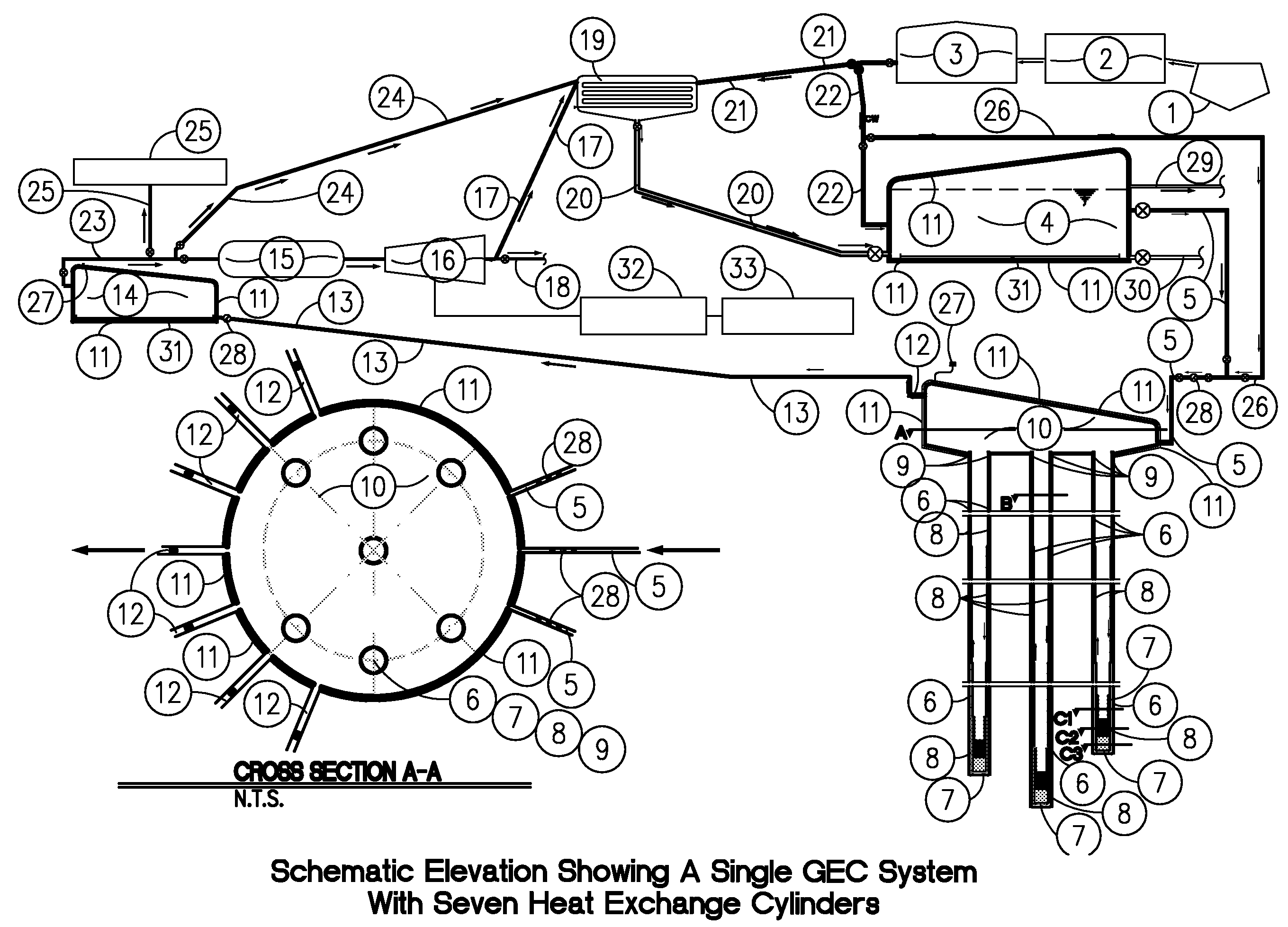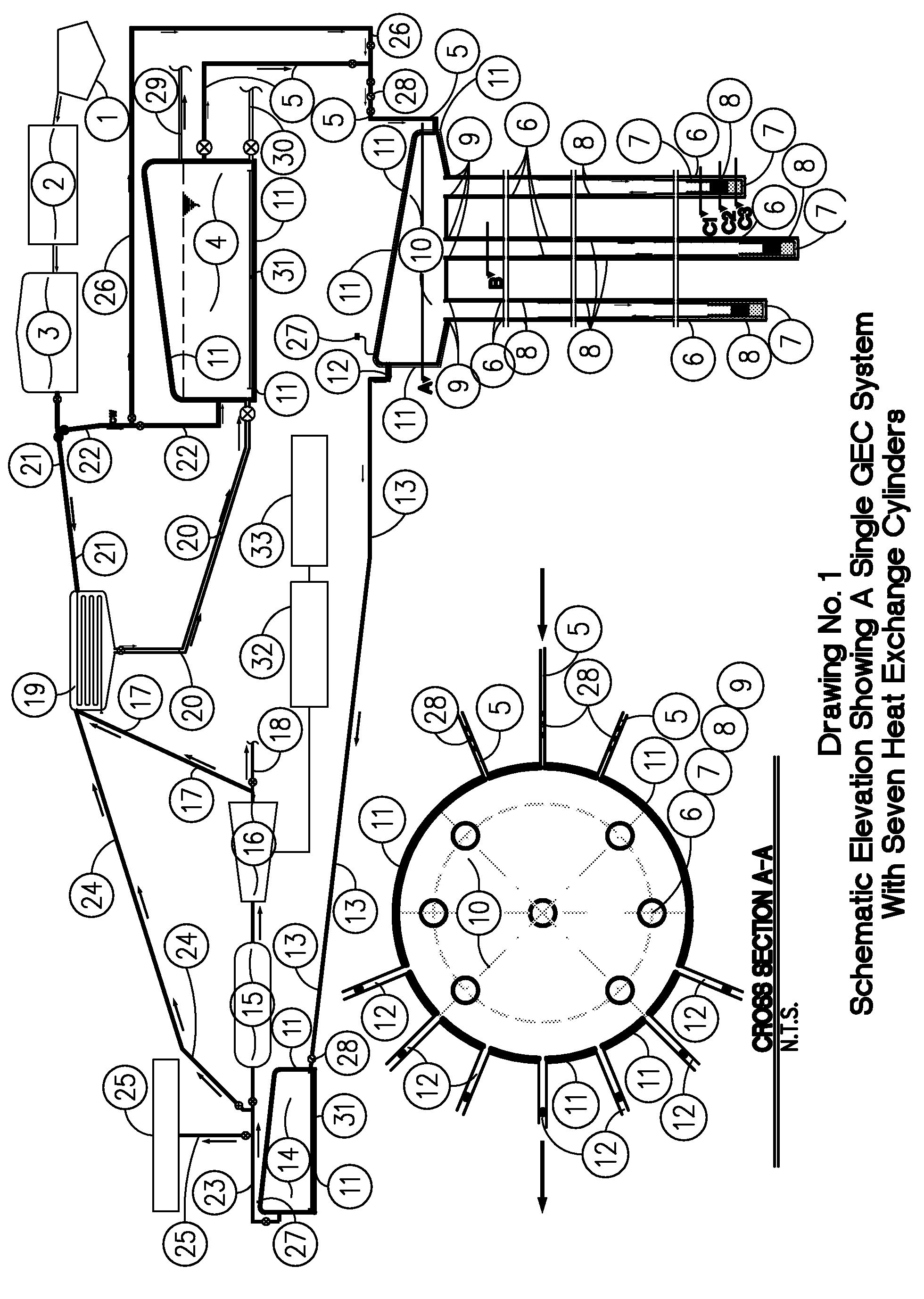Geothermal electricity production methods and geothermal energy collection systems
a technology of geothermal energy and electricity production method, which is applied in the direction of mechanical power devices, mechanical equipment, machines/engines, etc., can solve the problems of large-scale implementation of solar collector fields or wind turbine fields at great cost, affecting the environment, and affecting the efficiency of electricity production
- Summary
- Abstract
- Description
- Claims
- Application Information
AI Technical Summary
Benefits of technology
Problems solved by technology
Method used
Image
Examples
Embodiment Construction
[0088]This invention, the GEOTHERMAL ENERGY COLLECTOR (GEC) 6, 7, 8, 9, 10; the GEOTHERMAL ENERGY EXCHANGER (GEE) 6, 7, 8, 9, 35 along with the GEOTHERMAL FLUID HEATING OR STEAM PRODUCTION SYSTEM; the GEOTHERMAL ELECTRICITY PRODUCTION METHOD; the GEOTHERMAL HEAT ENERGY METHOD and their use as shown in Drawings 1, 15, 23, 24, 25, 26 and 27 appropriately employed along with existing technologies and equipment, altogether comprising “the methods” allows any suitable, isolated and confined fluid, such as treated water, water modified by additives and / or catalysts or steam to be supplied 5, circulated below ground and conductively heated within the heat exchange cylinders 8; then to be discharged 12 providing steam to steam turbines 16 or heated fluid for some other use 25; then to be condensed 19 if necessary and returned or recirculated 20 back to the mixing container 4 for reuse within an enclosed, non-polluting system. Within the preferred embodiment fluid, vapor and / or steam flows a...
PUM
 Login to View More
Login to View More Abstract
Description
Claims
Application Information
 Login to View More
Login to View More - R&D
- Intellectual Property
- Life Sciences
- Materials
- Tech Scout
- Unparalleled Data Quality
- Higher Quality Content
- 60% Fewer Hallucinations
Browse by: Latest US Patents, China's latest patents, Technical Efficacy Thesaurus, Application Domain, Technology Topic, Popular Technical Reports.
© 2025 PatSnap. All rights reserved.Legal|Privacy policy|Modern Slavery Act Transparency Statement|Sitemap|About US| Contact US: help@patsnap.com



